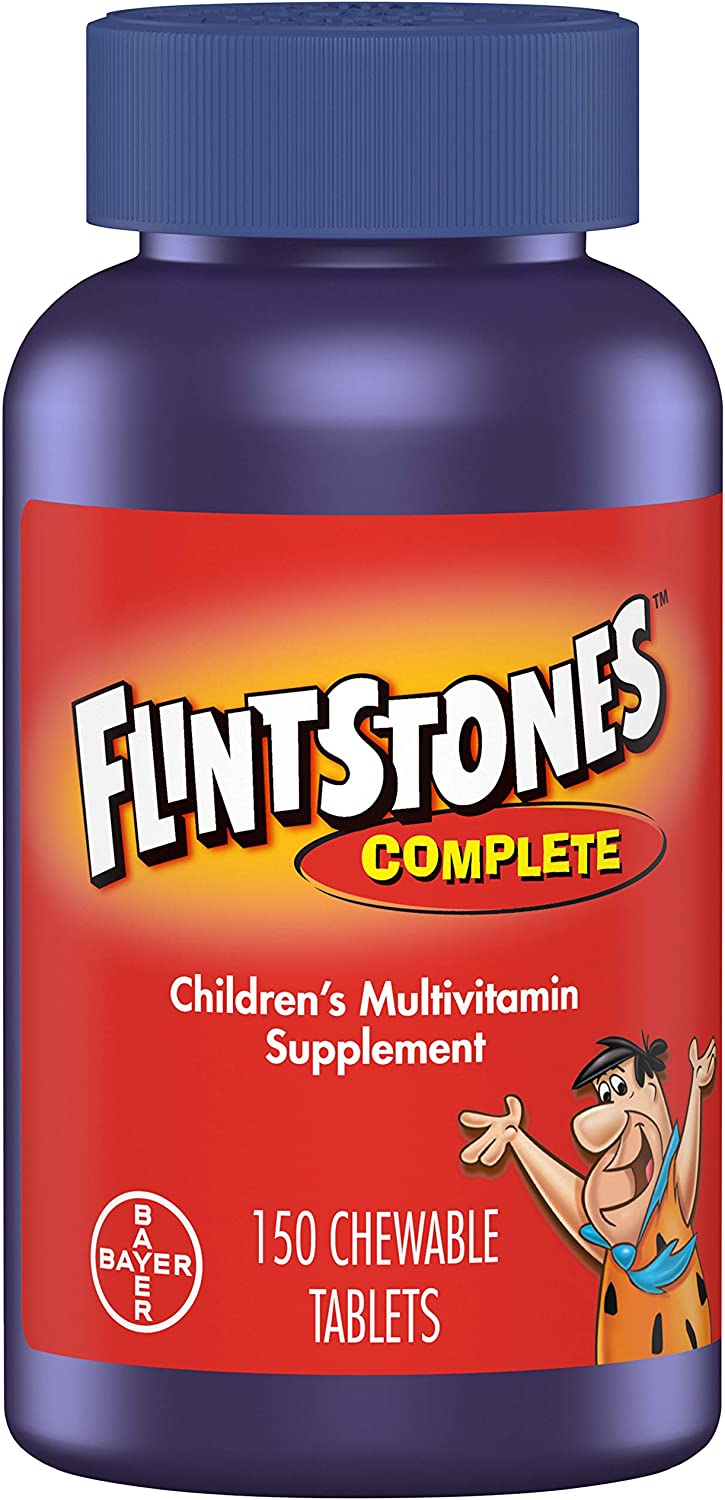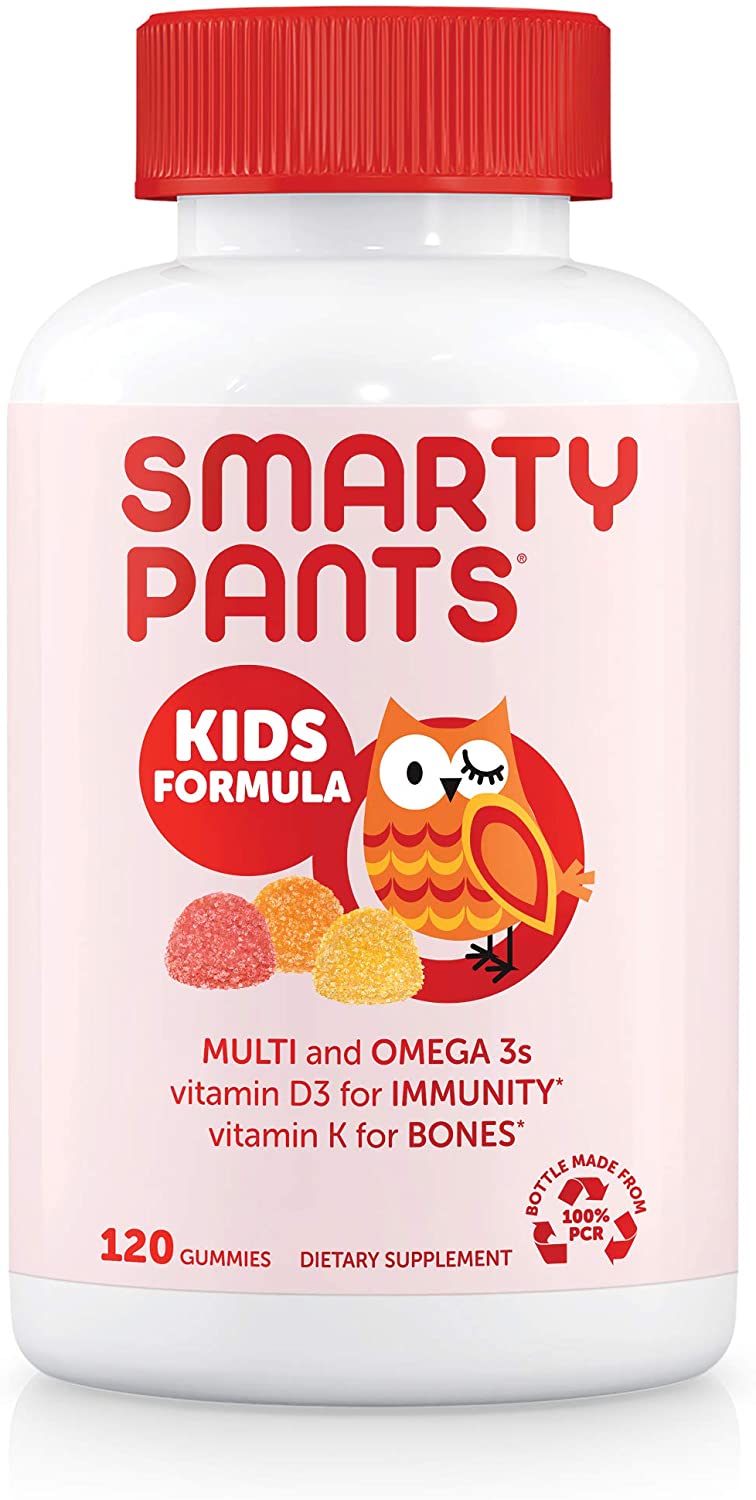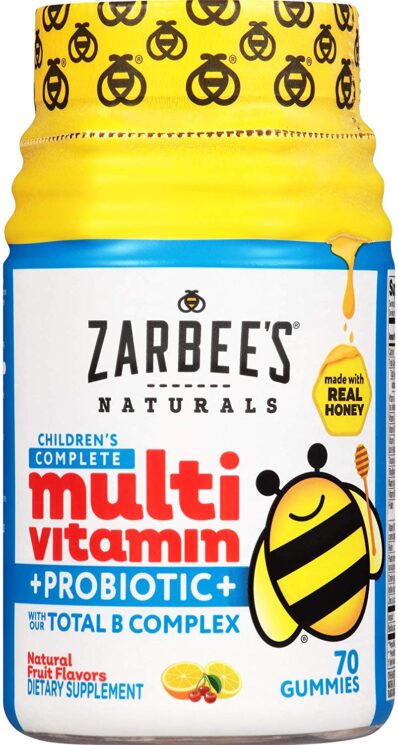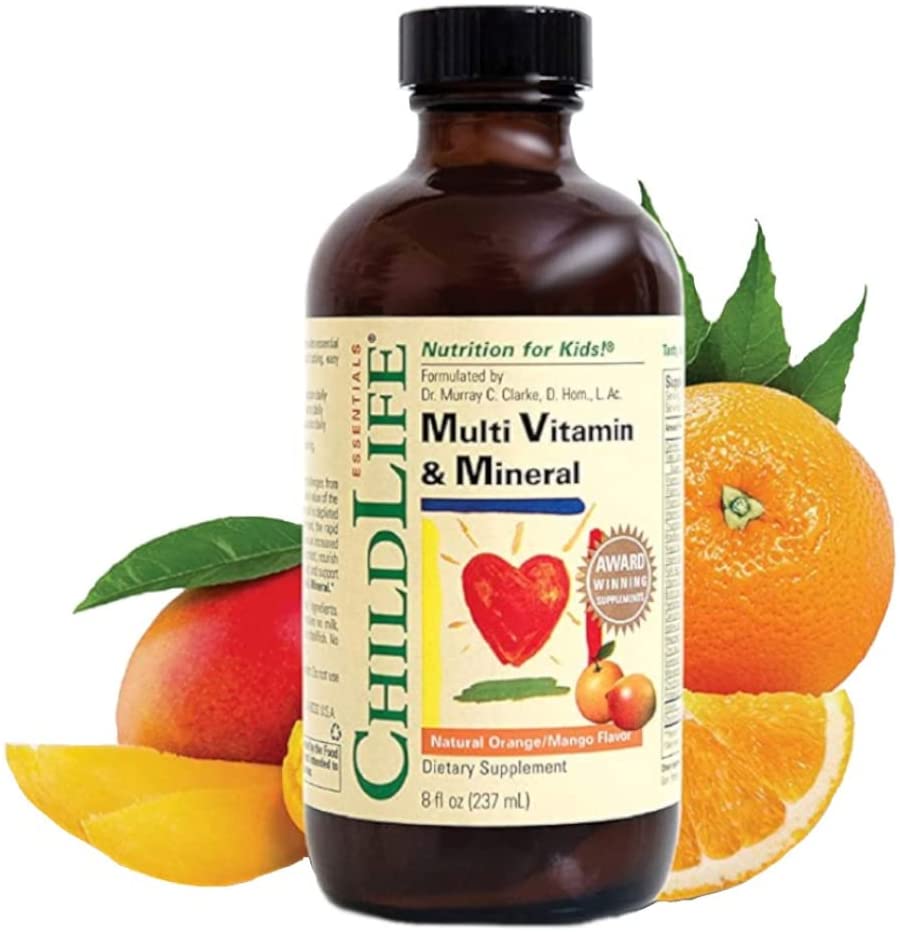Best Multivitamin for Kids: Researched Based Recommendations

If you are looking for a multivitamin for your kids, it can be overwhelming with the number of options out there. This is your complete guide to help you decide if your child needs a multivitamin, and which one is the best to give them.
Should I Give My Kids a Multivitamin?
A lot of parents wonder if they should be giving their kids a multivitamin. According to the American Academy of Pediatrics “healthy children receiving a normal, well-balanced diet do not need vitamin supplementation over and above the recommended dietary allowances.”
In general, the recommendation by medical professionals are that kids who eat a balanced diet that includes all food groups don’t usually need vitamin or mineral supplements. There are definitely exceptions and a multivitamin can help fill in the nutrition gaps for kids.
How Do I Know if My Child has a Nutrient Deficiency?
A nutrient deficiency in kids occurs when a child has an inadequate intake of the necessary amount of a specific nutrient or when their body doesn’t absorb a specific nutrient properly.
Kids and teens need the nutrients from a variety of foods to support their growth and development. A nutrient-rich diet plays an important role in your child’s mental and physical development. They should be eating a variety of foods from these groups on a regular basis:
- Fruits and Vegetables
- Whole grains
- Legumes
- Nuts and Seeds
- Lean proteins
What if your child isn’t getting the nutrients they need from food? It might be a good idea to supplement with a vitamin. A multivitamin is a good choice in some circumstances, but it depends on the nutrients your child needs. Keep reading to determine what and if you should look into a vitamin for your kids.
Symptoms of inadequate nutrient intake from food can look like:
- being underweight, overweight or obese
- constipation or changes in bowel habits
- being pale or lethargic
- tooth decay
- poor physical growth
If a nutrient intake deficiencies isn’t reversed, it can lead to longer term health problems including stunted growth, digestive issues, skin problems, and poor bone development.
When Should I Give My Child a Multivitamin?
Of course it is ideal to get all your vitamins and minerals through food, but it is also a good idea to give your kids a multivitamin if there are nutrition gaps in your child’s diet.
If your child falls into one of these categories, it may be a good idea to give them a multivitamin:
- Follows a vegetarian or vegan diet
- Has a medical condition that affects the absorption of or increases the need for nutrients, such as celiac disease, cancer, cystic fibrosis
- Had surgery that impacts the intestines or stomach
- Picky eater and struggles to eat a variety of foods
Some other reasons your child might not be getting enough nutrients from food:
- Food Allergies – Children with food allergies may experience problems such as food aversion, food refusal, food neophobia, and anxiety about eating in general, which can lead to inadequate nutrient intake in addition to the nutrients missing from the foods they need to avoid.
- Independent Food Choices and Restricted Diets – As kids get older and become more independent they may decide to follow particular diets or restrict certain food groups which can result in nutrient deficiencies in their diet.
- Limited Access to Nutrient Rich Foods – Many kids just do not have access to enough of the food that gives them the nutrients they need on a daily basis.
- Over Consumption of Processed Foods – If your child is eating a lot of high sugar, high sodium processed foods and beverages, they are likely not eating enough fruits, veggies, whole grains and protein leading to nutrition gaps.
Most Common Nutrient Deficiencies in Kids Ages 4-18
Based on the most recent NHANES (National Health and Nutrition Examination Survey) the current intake for the majority of kids in the United States show that from an early age, overall diet quality is poor.
This is based on average intake of the different food groups compared to recommended intakes as well as exceeding the recommended limits for added sugars, saturated fat and sodium. The Healthy Eating Index score declines throughout childhood and adolescence, with scores for adolescents approximately 10 points lower than those for young children.
The most common nutrient deficiencies in school age kids are: calcium, vitamin D, iron, and magnesium. These are reasons your child might be low in these nutrients and food sources of each.
Calcium
Your child might need more calcium if they:
- have a lactose intolerance
- have a milk allergy
- eat a vegan diet
- avoid dairy foods in general
Symptoms of Low Calcium:
- muscle aches, cramps, spasms
- pain in thighs and arms when walking or moving
- numbness and tingling in hands, arms, feet and legs
Foods high in Calcium:
- milk
- yogurt
- cheese
- dark greens like broccoli, kale, chard
- white beans red beans, chickpeas
- calcium fortified cereal, bread and juice
Vitamin D
Recently, vitamin D deficiency has become very common because of the lack of sun exposure and there are not many natural foods that contain adequate amounts of vitamin D. Vitamin D is needed for healthy bones and to help your body use calcium. It has been studied heavily and has also been shown to help with the immune system, cardiovascular health. Reasons for low Vitamin D:
- Inadequate sun exposure
- Darker skin color
- Low intake of Vitamin D rich foods
Symptoms of Low Vitamin D
- Skeletal Diseases – rickets and osteomalacia
- Increased respiratory infections
- Food allergies
- Asthma
- Earlier start of menarche
Foods High in Vitamin D
- Salmon
- Tuna Fish
- Fortified milk
- Fortified orange juice
- Fortified cereals
Iron
Iron is one of the most common nutrient deficiencies in kids. Reasons your child might have an iron deficiency:
- Kids under 5 who drink more than 24 ounces of milk a day
- Eat a vegetarian or vegan diet
- Endurance athletes, especially those who menstruate
Symptoms of Iron Deficiency Anemia:
- Feeling very tired and weak
- Frequent headaches
- Low energy
- Pale skin
- Shortness of breath
Foods High in Iron
- Meat, fish, poultry
- Lima beans, kidney beans, chickpeas
- Fortified breakfast cereal and bread
- Raw spinach and broccoli
Magnesium
Magnesium and calcium work together to make sure muscles function properly. Magnesium helps muscles relax and works to activate Vitamin D and Calcium to make strong bones. It also helps keep the heart beating regularly, supports your immune system especially when it is under stress and can improve sleep.
Your child might have low magnesium intake if they:
- Have extreme dietary restrictions
- Have a digestive disorder
- Eat mostly processed foods
Symptoms of Magnesium Deficiency
- Moodiness, irritability
- Difficulty Concentrating
- Insomnia
- Loss of appetite
- Nausea/Vomiting
- Fatigue and weakness
Foods High in Magnesium
- Dark leafy greens (spinach, kale)
- Nuts and Seeds
- Legumes
- Fortified grains
- Salmon, halibut
- Bananas, Carrots and Apples
What Should I Look for in a Multivitamin?
If you are concerned that your child is deficient in a specific vitamin or mineral, a simple blood test at the doctor will be able to tell you. It you are considering supplementing, it is a good idea to get their levels tested. This is especially important with iron because there are potentially harmful effects of taking too much supplemental iron.
How to Choose a Vitamin for Your Child
- Determine which vitamins they might not be getting from their diet or that they are deficient in
- Make sure the nutrients included are close to 100% of the DV for all essential vitamins (unless you are looking to supplement a specific vitamin at a higher dose because of a deficiency)
- Look for a vitamin that that is specifically made for kids
- Should not include high fructose corn syrup or artificial sweeteners
- Third party testing to ensure the vitamin contains what it says it contains
Top Recommendations for Kids Multivitamins
I chose the following vitamins based on a few criteria:
- Ingredients. All the products I recommend are made with safe, high quality ingredients and contain no artificial flavors, food dyes, or high fructose corn syrup.
- Age Appropriate. I only included products that are specifically formulated for kids.
- Reputable brands. These vitamin products are from well-known brands that adhere to strict manufacturing standards.
Overall Best Multivitamin

Pros:
- Consumer Labs tested and is the top rated vitamin for kids out of hundreds of brands
- Includes iron and calcium (not found in gummy vitamins)
- Ages 2-Teen
- Reasonable Price
Cons:
- Tablets might be hard to chew for toddlers
- Not gluten free
- Does not contain magnesium
Best Gummy Vitamin

Pros:
- Contains Omega-3s EPA and DHA
- Yummy tasting gummy
- Gluten Free
Cons:
- Have to take 4 gummies per day
- Does not contain iron or calcium
- Ages 4+
Best Multivitamin + Probiotics

Pros
- Contains probiotics
- Made with vegetarian pectin
- Only need to take 1 per day
Cons
- Does not contain iron or calcium
- Expensive
Best Liquid Multivitamin

Pros
- Easier for some kids to take
- Adjustable dose for kids to start as young as 6 months
- Contains calcium
Cons
- Does not contain iron
- Needs to be refrigerated

Natalie Monson
I’m a registered dietitian, mom of 4, avid lover of food and strong promoter of healthy habits. Here you will find lots of delicious recipes full of fruits and veggies, tips for getting your kids to eat better and become intuitive eaters and lots of resources for feeding your family.
Learn More about Natalie



